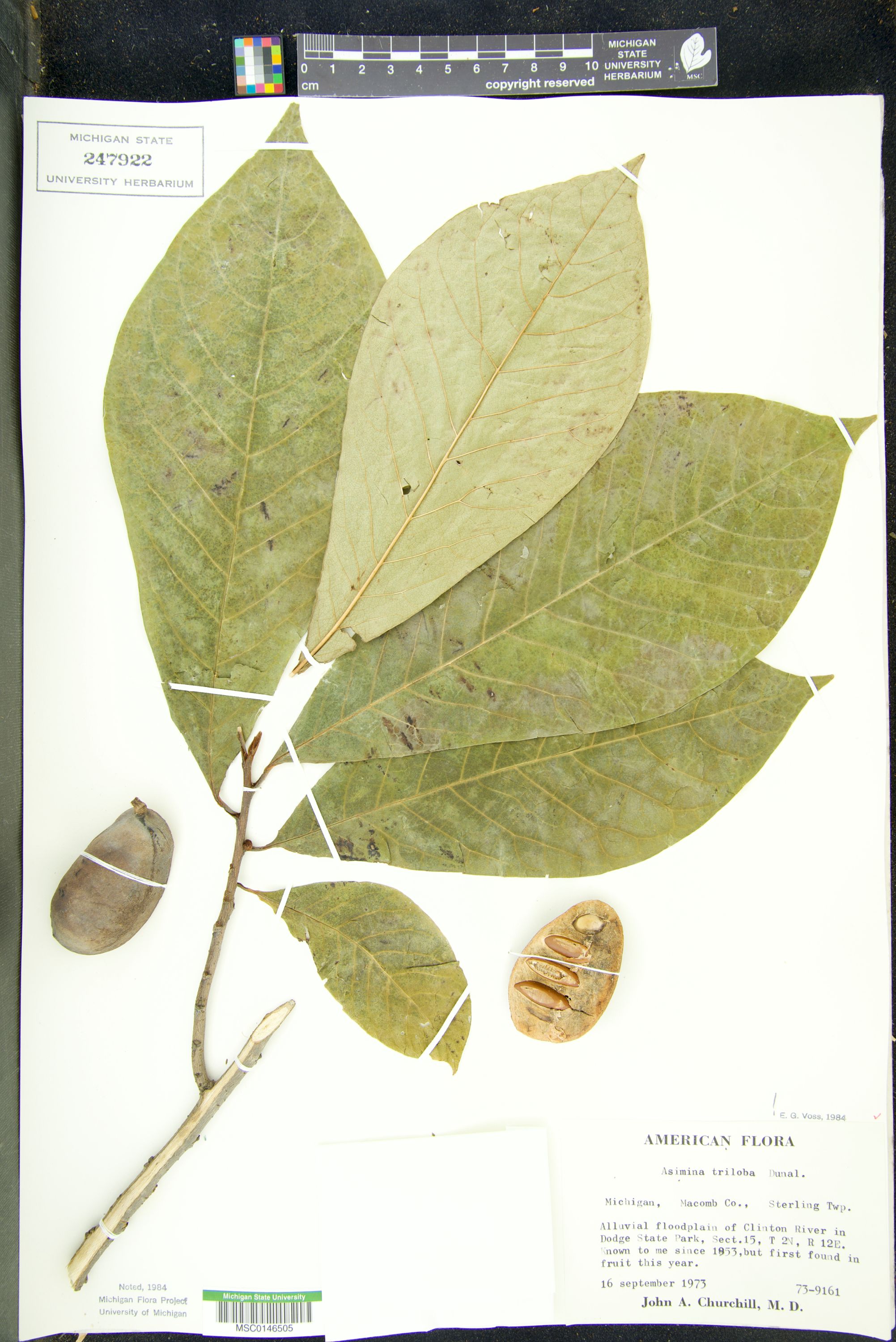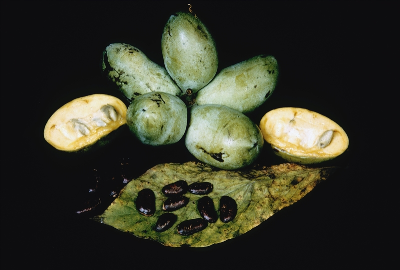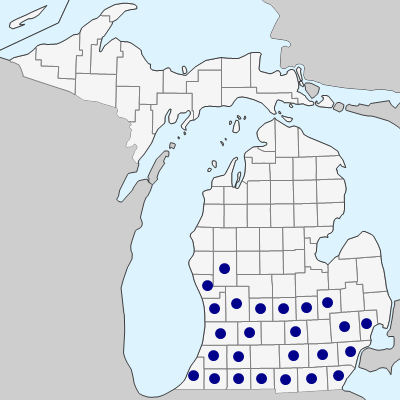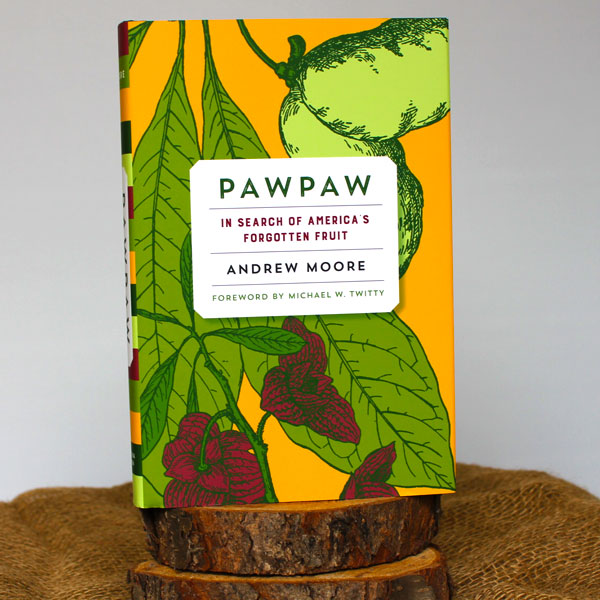Asimina triloba
The #pawpaw has the largest fruit indigenous to the United States. Their taste is described as being sweet and custard-y like a mango-banana hybrid. If you want to get your hands on a pawpaw, mid-August thru September is when you’ll find them ripe.
Until just a few years ago, the largest known pawpaw in Michigan, standing 37 feet tall, was in, well, Paw Paw, Michigan! See here.
The pawpaw has interesting history to its #distribution- First naturally distributed by Pleistocene megafauna before the ice age up until the Quaternary extinction. Humans have been the primary distributors since. Check out this article about anachronistic fruits like the pawpaw.
Today, pawpaw can be found in the Eastern, Southern, and Midwestern United States in flood plains and shady bottomlands. It’s thought that Native Americans were likely the ones that brought the pawpaw to its northernmost range limits.
If you want to know more about the pawpaw, check out the book Pawpaw: In Search of America’s Forgotten Fruit by Andrew Moore, or listen to the Gastropod podcast “Pick A Pawpaw”. Both are chock full of pawpaw information!
 An Asimina triloba specimen from the Michigan State University Herbarium's collection. One of the specimens
used to create Page 3 of Michigan Trees. An Asimina triloba specimen from the Michigan State University Herbarium's collection. One of the specimens
used to create Page 3 of Michigan Trees. The edible fruit from Asimina triloba. The edible fruit from Asimina triloba. The beautiful deep burgundy flowers from Asimina triloba. The beautiful deep burgundy flowers from Asimina triloba. A distribution map of Asimina triloba across Michigan, via Michigan Flora. A distribution map of Asimina triloba across Michigan, via Michigan Flora. Pawpaw: In Search of America's Forgotten Fruit by Andrew Moore, a book with everything
you would ever want to know about Asimina triloba. Pawpaw: In Search of America's Forgotten Fruit by Andrew Moore, a book with everything
you would ever want to know about Asimina triloba. |